Sketchnotes: Introduction Into Visual Note Taking
Hello Planning Mashers!
Today we will be talking about probably the best way to record information – visual note-taking (or sketchnotes).
Visual notetaking is one of the best hacks to make sure you remember any information. So even though the first instinct is to say this is only for school, but it can be used in many more ways.
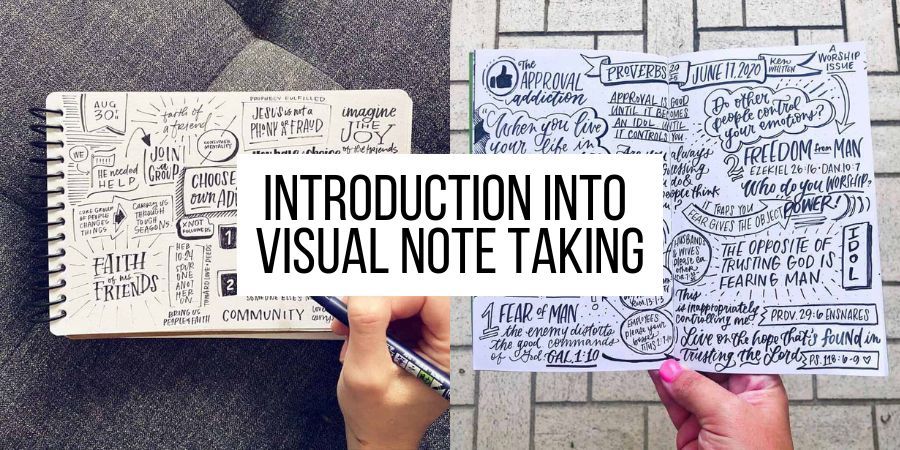
Since starting my business, I have realized how much I have to learn. Ever since then, I have doubled down and kept on learning, reading, and taking courses.
But just doing all that is not enough – you need to work with information, keep it, and use it. That’s when visual notetaking came into play and changed the game for me.
With the new school year starting, I thought it would be a perfect time to share my knowledge in this area with you.

I’ll also have a kind of study-with-me video at the end of the post, where I’m taking visual notes from one of the courses I took lately, which could be fun and useful to check out.
I also added my favorite free resources if you want to dive into sketchnoting a bit deeper.
This post may contain affiliate links. They will be of no extra expense for you, but I receive a small commission. Please see my Disclosure for more details. Thank you for supporting Masha Plans!
What And Why Of Visual Note Taking
Visual notetaking is a way to summarise information with text, sketches, and colors structurally.
It’s an improved way to take notes that plays on your brain’s visual skills.
Being more visual it gives your brain more and better clues to information, so in the end, you can remember more of it with less effort.
Words are not easy for us to comprehend and remember, but visuals are concrete, and easier to remember and understand.
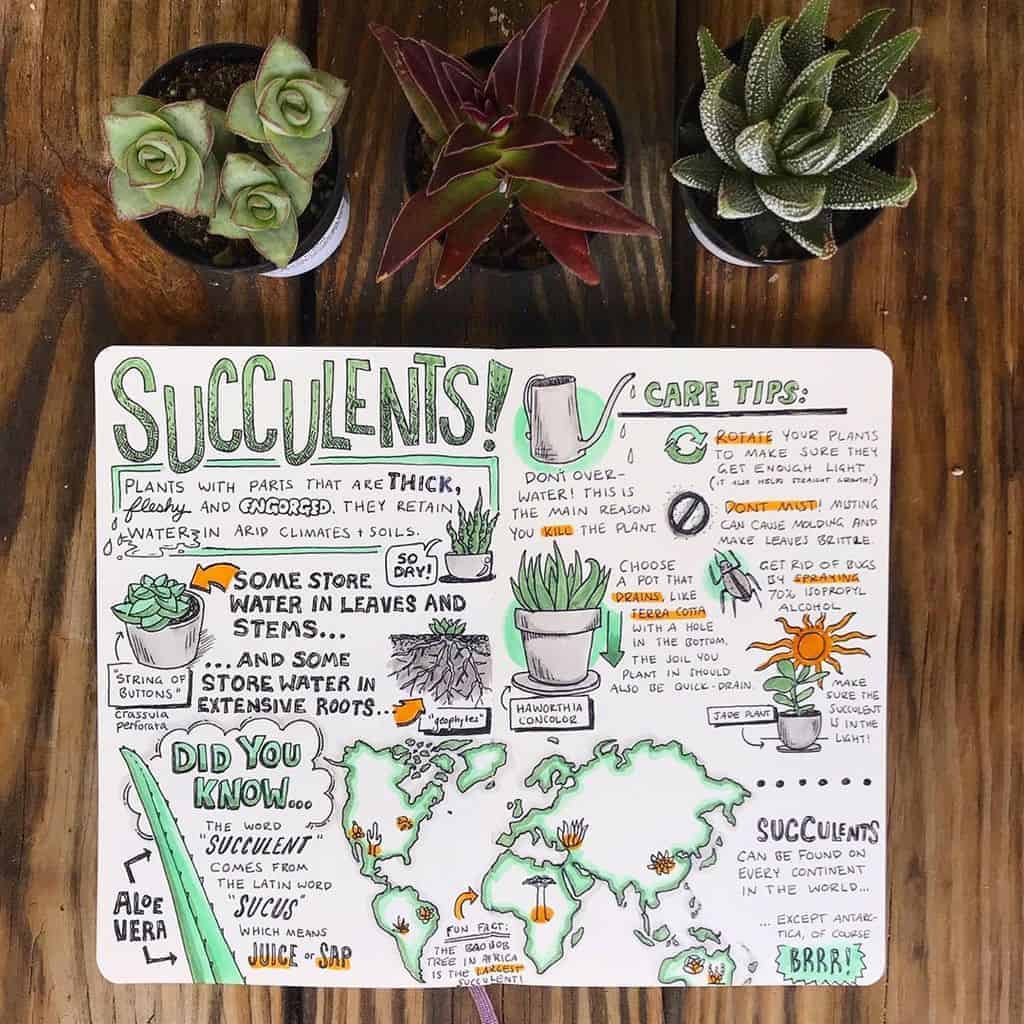
Remember that an image is worth a thousand words. Visual notetaking plays on this specific train of your brain to help you work with information.
Taking visual notes also helps you to retain and work through information because now you’re not just writing what you hear but working your brain to build connections and dissect the most important information.
The thing is, the value of information is in analyzing and using the data given. However, our memory really is not that good; most of the information we get is forgotten or filed so far away that we’ll never remember it.
That’s why you need to work through all the information and, more importantly – create a way to store all the main points. Sketchnotes are exactly the way to do it.
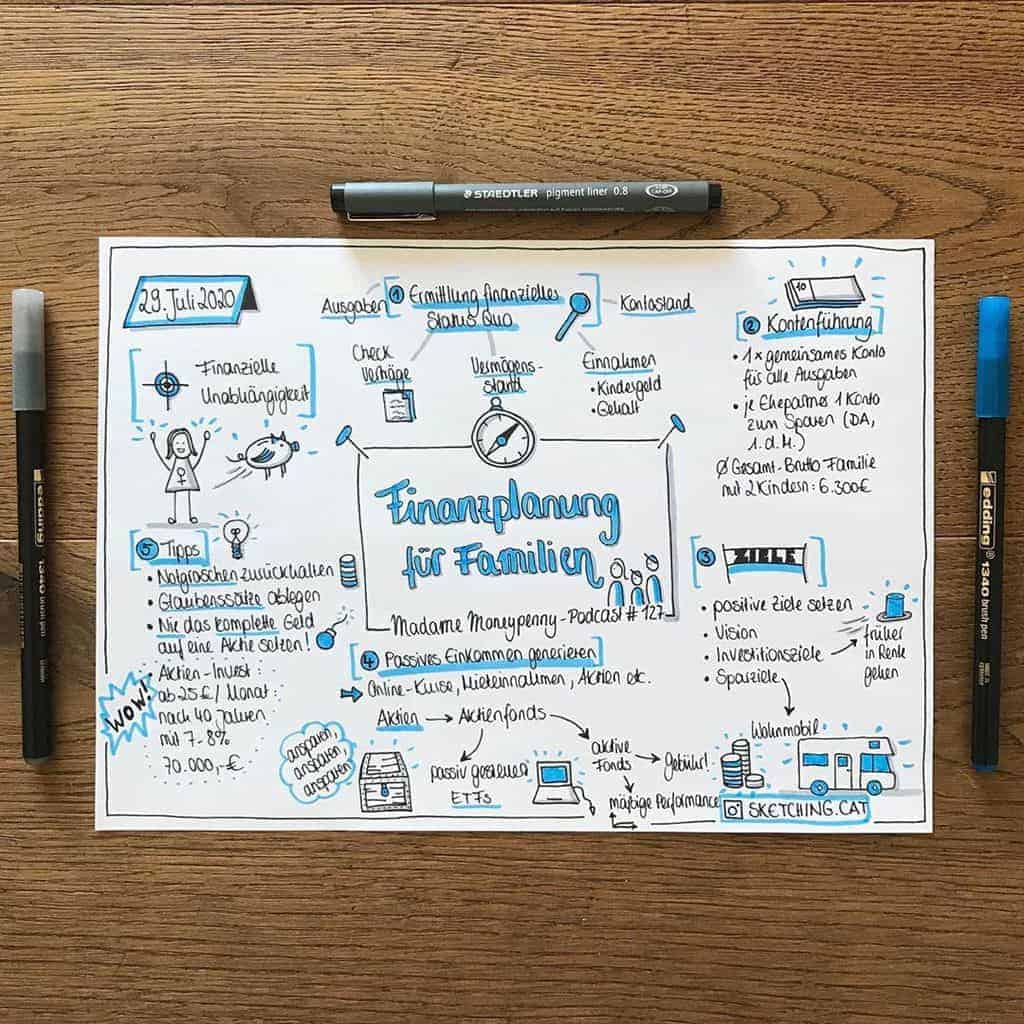
Besides being able to understand information better at the moment, sketch notes (visual notes) will be the perfect reference point for the future.
Next time you need to freshen up your memories of a lecture or book – open one of your notes, and it will all come back to you.
And if it doesn’t sound that realistic – don’t worry; you’ll see it is very effective and very simple once you finish this post.
And because sketch noting is all about mixing different types of learning and presenting information, I wanted to also include this video which explains it pretty well in a video format.
Main Concepts Of Sketchnotes
Visual notes consist of 4 basic components – text, images, color, and structure.
Text is an important part of your note-taking process, but with visual notes, it’s different than what you’re usually used to.
While creating visual notes, you should add text while thinking about hierarchy and distinction. You use different fonts or text sizes to highlight the important aspects of the information.
This will make it easier for you to later distinguish between the main point and supporting text.
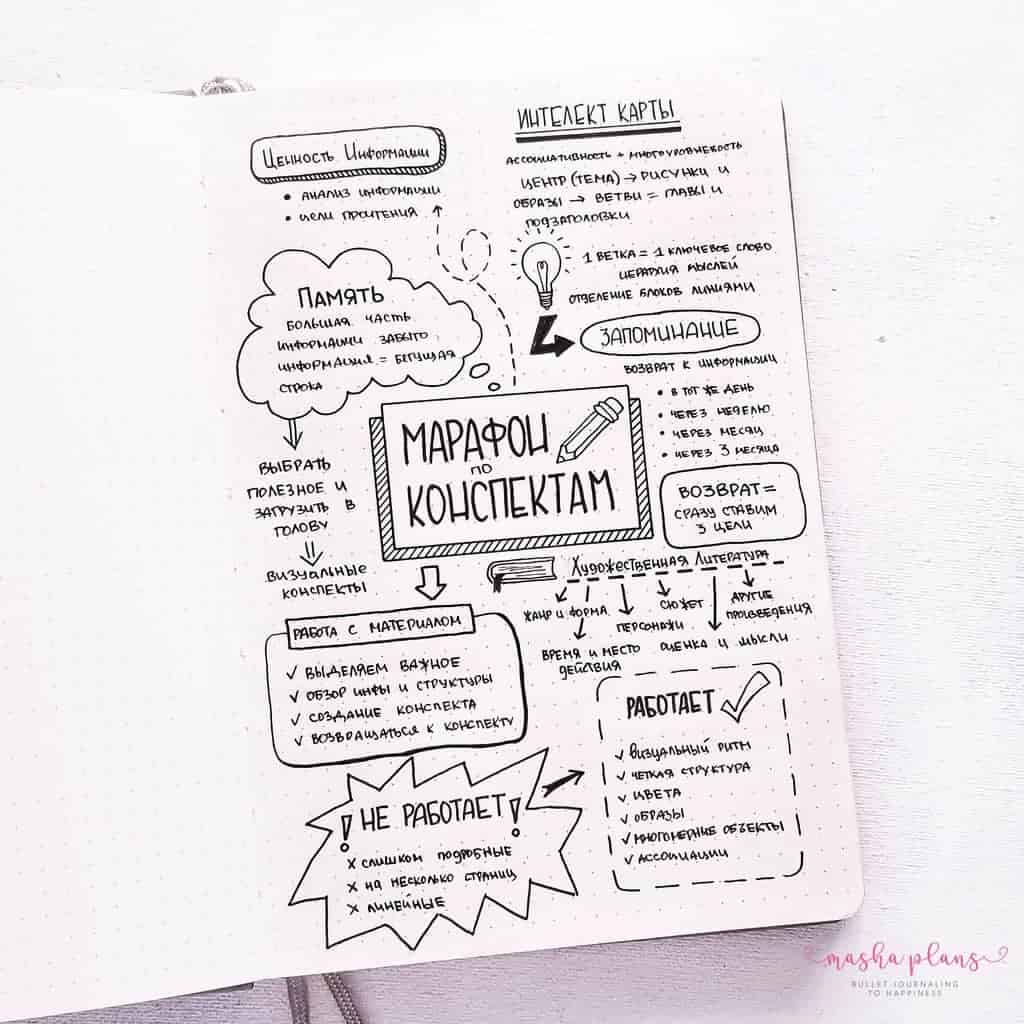
Using images is important because it translates words into recognizable forms. This will help your brain so much when working with information.
Moreover, what I discovered is that often images are more powerful clues; it’s easier to connect a certain memory or term with an image. This makes them the most powerful element of visual notetaking.
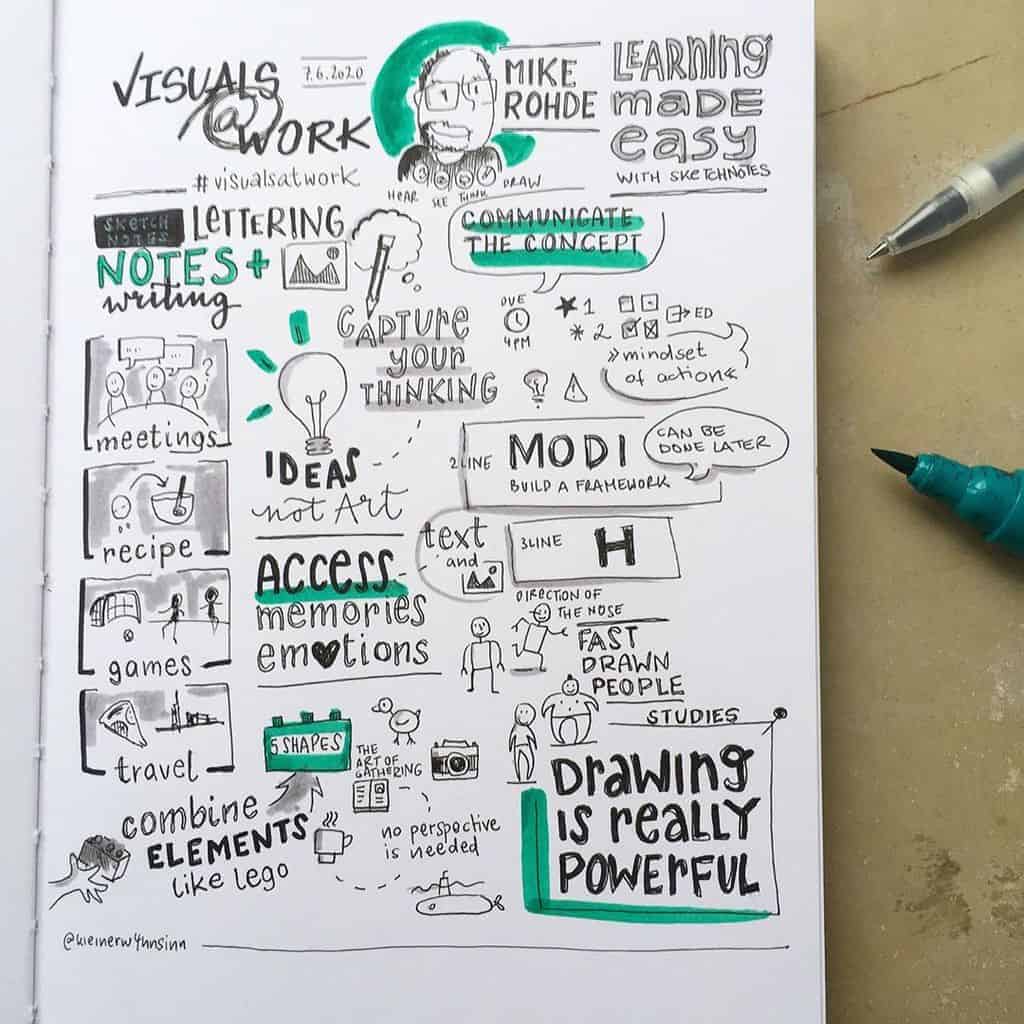
Color is important; it adds more visuality to your notes and helps you make them more fun to look at and easier to note the important information.
Finally – structure. Structure gives your notes directions and organizes the relationships between different concepts and terms you’re learning.
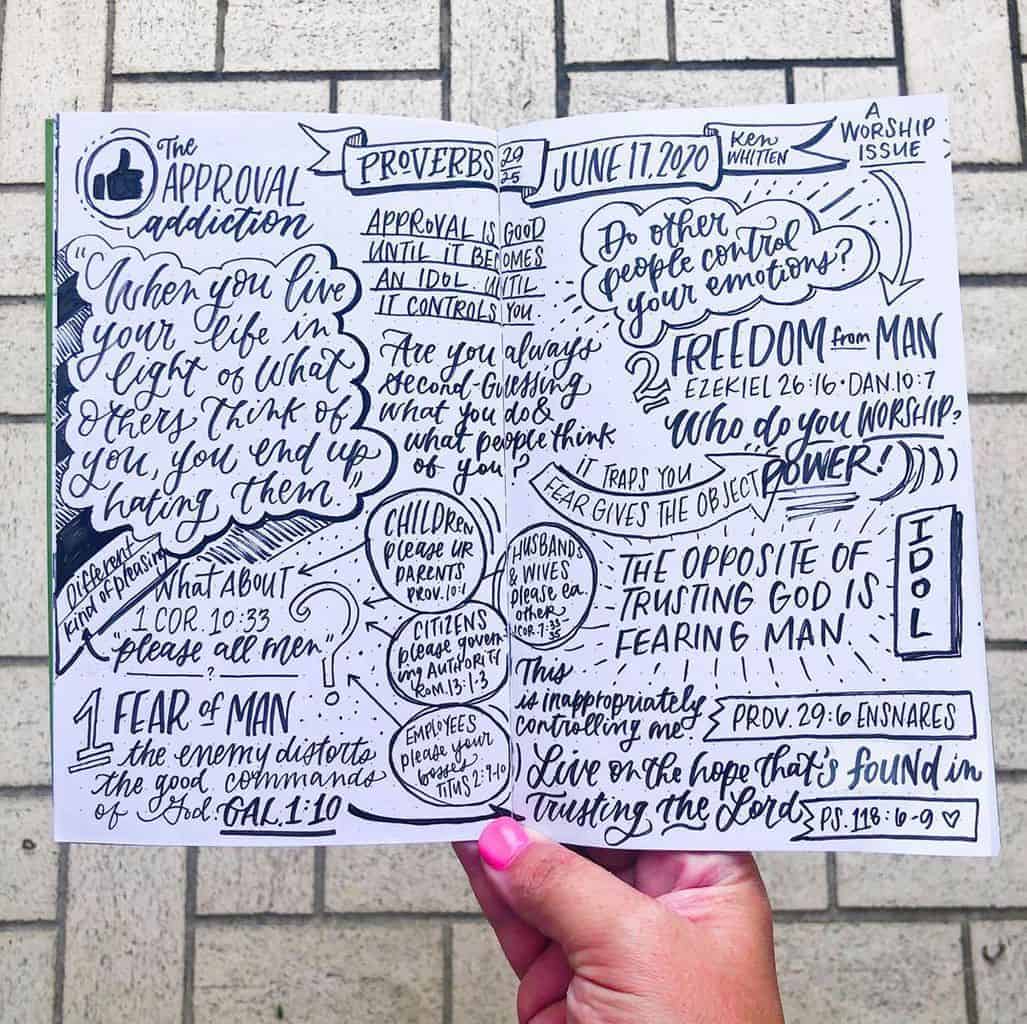
Don’t worry if you feel like you can’t do it or don’t have the skills. You do, and below I’ll show you how to easily tackle these tasks.
What You’ll Need
So what do you need to take visual notes? For real, you need a pen and some paper. Even though we did say the color is one of the notes’ main concepts, you can just use one pen. So don’t worry about that.
I do want to share some of my favorite supplies, though.
I created a separate journal for all my notes, and I chose an Archer and Olive Neapolitan notebook. This is an awesome notebook that has all kinds of pages – white, kraft, and black. This will make all my notes look different, and it’s a cool way to use this magnificent notebook.
If you ever decide to buy any Archer and Olive products, be sure to use code MASHA10 to get 10% off your order!
The basis of any notes is a pen; for me, it’s a fineliner. I like fineliners for their rich black color and the fact that they come in different sizes so you can add more dimension to your notes.
My favorite fineliners are Faber Castell Pitt Artist Pens, but there are many others that I tried and loved as well.
For color, you can use tons of them or maybe just one. I like multicolor, so I’m using Zebra Mildliners and Zebra Click Art pens. You can use your Bullet Journal pens!
If you’re looking for more stationery ideas, check out these posts:
35+ Best Bullet Journal Supplies Recommended By Pros
The Best Pens For Bullet Journaling
Best Bullet Journal Supplies For Any Artistic Level
How To Take Visual Notes
Before we start, here is the main thing you need to remember – you don’t have to write everything.
What you need to write are bullet points and highlights of the most important thoughts.
The idea of sketching notes that each main point will be a clue for you to remember more details and examples without the need to actually listen to the lecture again or read the book one more time.
You start from a structure. Think about how you want to organize your notes.
Do you want the header to be in the middle and all the main points coming out or it? Do you want all the images to be on one side and text on the other? Should you maybe go from left to right?
Remember – you shouldn’t worry if you won’t have enough space. First of all, these should be bullet points, so they shouldn’t occupy that much space. Secondly – you can always continue on your next page.
Most importantly – it’s a skill that comes with time. I’m still learning myself, and I see myself getting better each time.
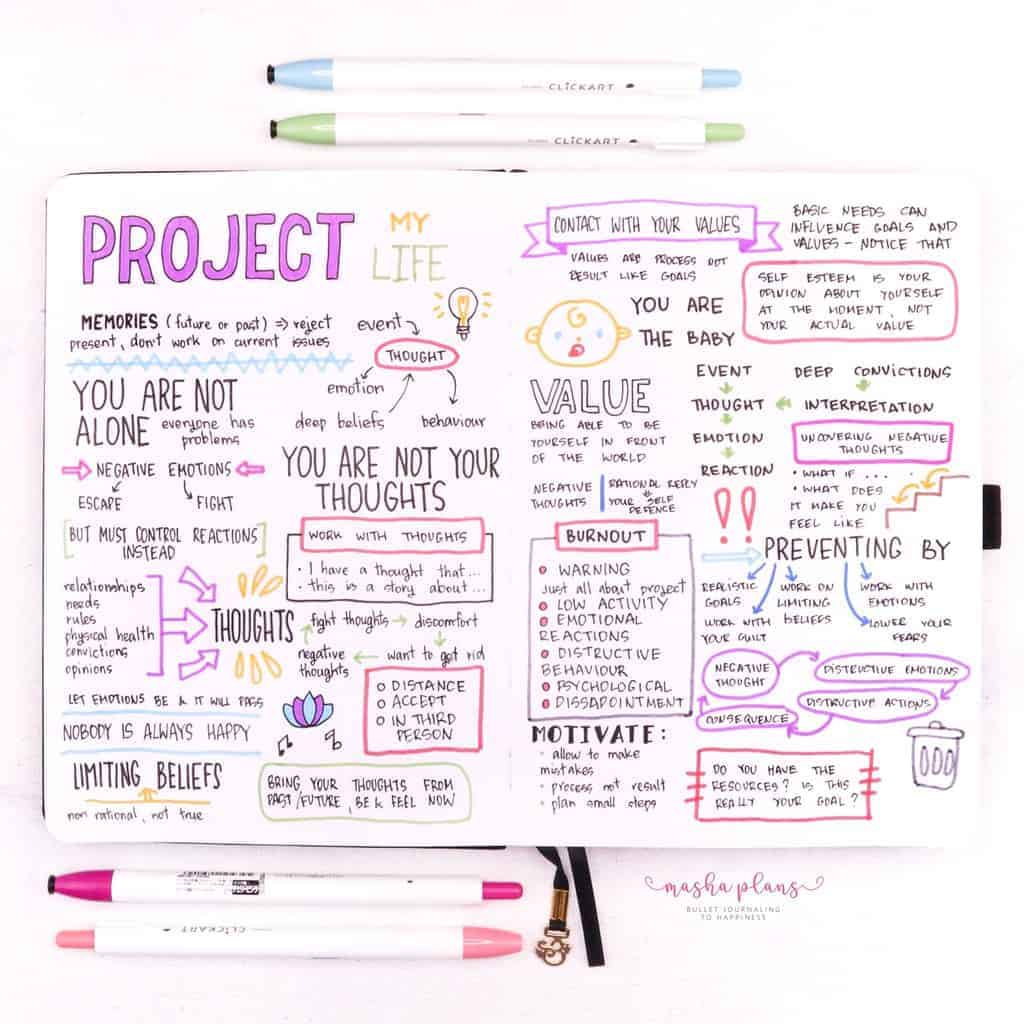
Next comes the text. If you worry, try to prepare – think of a few different fonts you’d like to use. Think of maybe some styles you would like to use for important worlds you’d like to highlight.
You can check my post with Header Ideas For Your Bullet Journal to get some inspiration on different ways to enhance your text.
Then I’d say, comes the color. You can use a highlighter to take note of the main concepts. You can write everything in black and use color to create arrows and frames around your text. Or maybe you’ll use black for drawings and blue for text.
If you’re worried – be sure to consider it before you start.
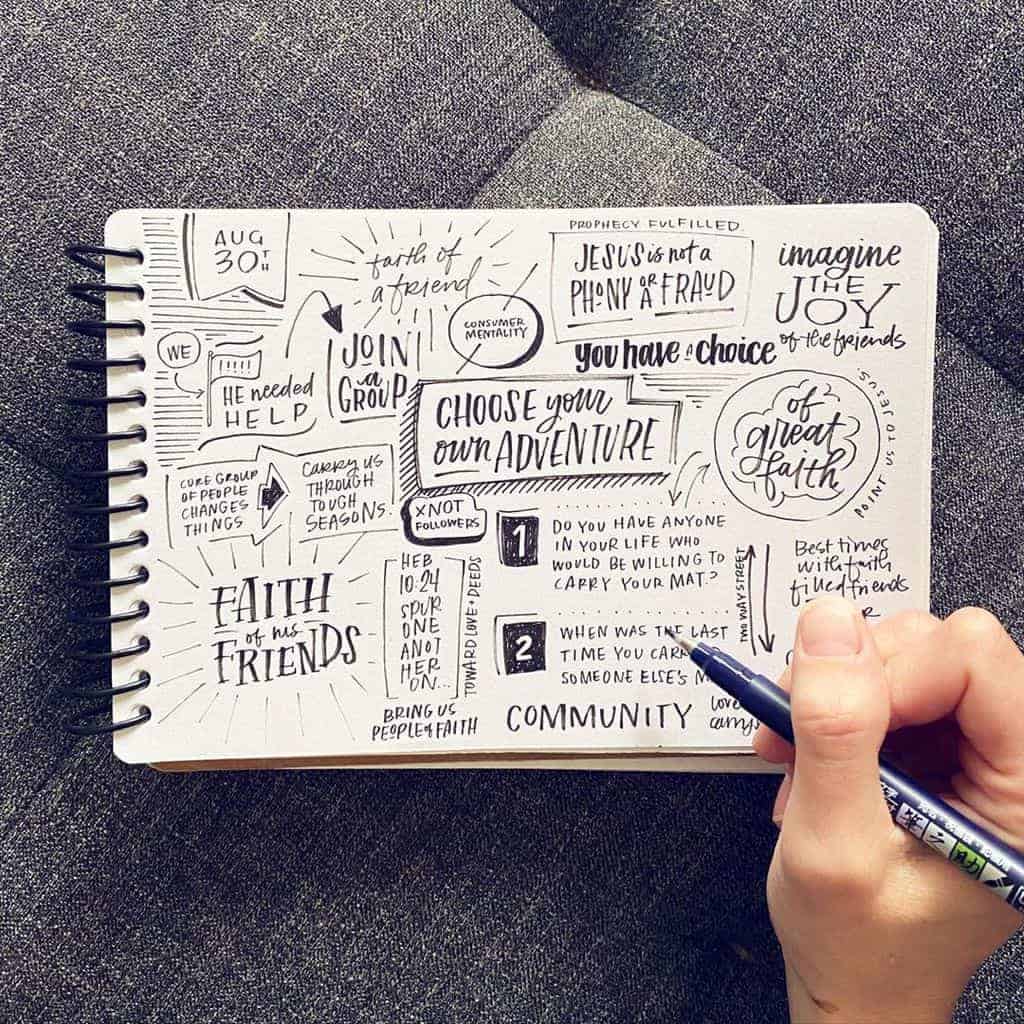
Finally – doodles and drawings, can be the most intimidating part.
These are doodles; they don’t have to be super perfect, just good enough for you to understand what it means.
If you’re worried you can’t doodle – you can! Check my Beginner’s Guide To Doodling to help you get the basics.
Moreover, you can always prepare some doodles and icons you like to use in advance. For example, I like to use icons like lightbulbs, computers, books, etc.
Create a little cheat sheet to be your reference later on, or maybe leave some empty space in your notes to add drawings later.
Another cool way to add a visual aspect to your notes is by using banners, frames, arrows, and other similar elements.
Here is an example of my cheat sheet, which I usually look at when working on my notes.
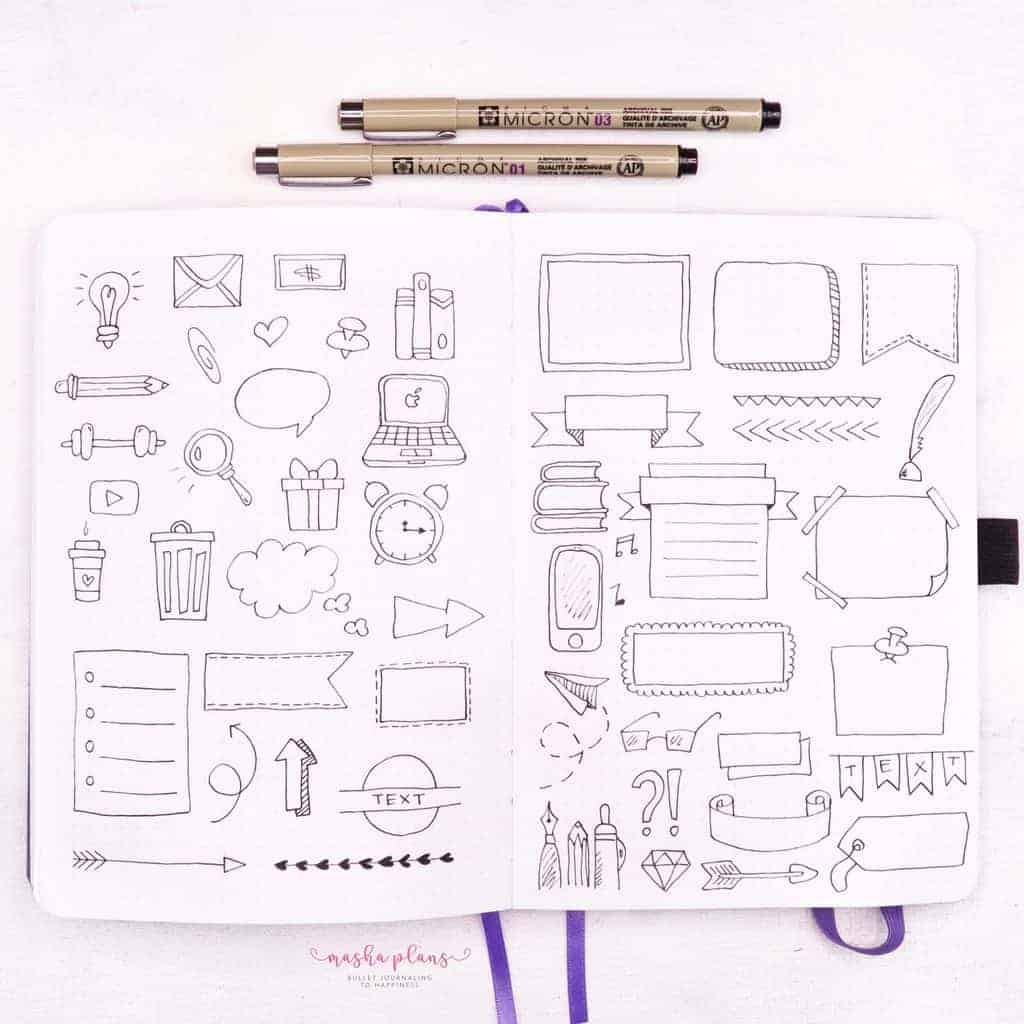
For more banner ideas, be sure to check my blog post Easy and Creative Bullet Journal Banners.
Do And Don’t Of Visual Note Taking
Just to be clear, here are the basic things that work for sketch notes, and here are the things that don’t and you should avoid doing.
What doesn’t work:
- Too detailed
- Takes many pages
- Linear structure
What works:
- Visual rhythm
- Clean structure
- Colors and images
- Associations
Follow these main principles, and your notes will look amazing!
When To Use Sketch Notes
We haven’t talked about the most important part – when would you use a visual note-taking technique?
Fits of all, if you’re a student (or just a lifelong learner), this will be perfect when you take your classes and lectures.
For work, this would be amazing to take notes for your meetings, conferences, and presentations.
Finally, it’s also an amazing way to work with books, be it self-help books of fiction literature.
When you read a self-help book, it’s like taking a course, and you want to come out of it with tons of new ideas and action plans. Visual notes will help you to remember the information better and will be a great return point for when you need to refresh it.
As for fiction literature, let’s talk about it separately.
Visual Notes For Fiction Literature
Why would you want to do that?
First of all – your literature class. Creating sketch notes for your school literature program will help you to easier work with these books later on.
But even if you’re not at school, it might be fun to create those.
I used to read a lot of fiction before. And now, mostly if you ask me about the book, I’ll likely not remember anything about it, except that I did or did not like it. If I even remember it at all.
It’s very sad. But if I took short visual notes of all the books I read – it would be easier for me to remember and maybe be a bit more interesting when discussing this topic.
It also might be a fun use of one of the notebooks I have lying around, and I bet you also have it in your collection – create a reading journal!
So here are the prompts for creating fiction notes:
- Genre and form
- Time and place
- Characters
- Story
- Thoughts and evaluations
- Other books of the author
Working With Information
Finally, let’s talk about working with information.
Creating sketch notes is useful and a wonderful first step, but what comes next? If you want to work through the material, just note-taking might not be enough.
Once you’re done with your notes – decide on 3 goals based on the material. Start using this knowledge right away.
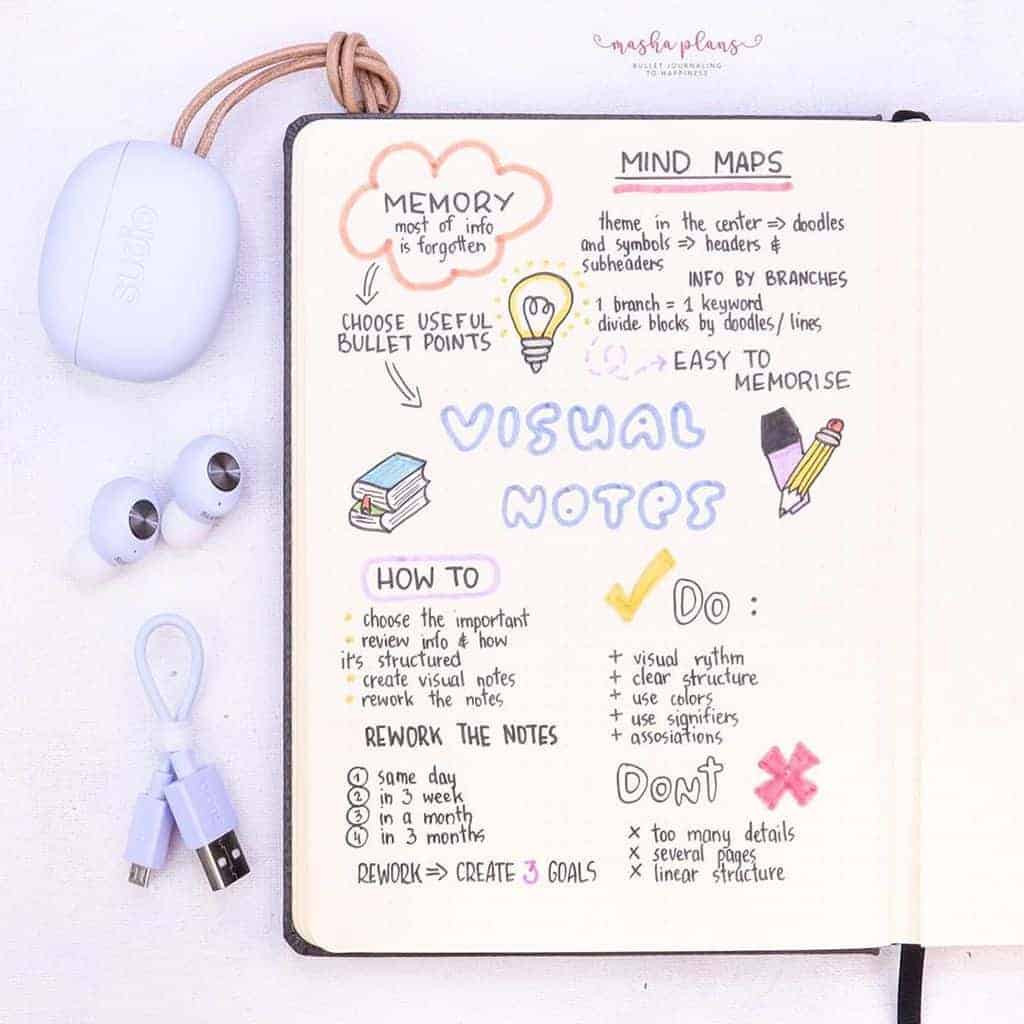
Another thing you have to do is to come back and review your notes. Let’s say on the day you took them, in a week, in a month, and in three months. And every time you come back to review, set another 3 goals based on the material.
Returning and reviewing your notes will help you to remember them better and to put them deep into your memory.
Moreover, it will be a good reminder to use the knowledge and a good checkup to see how well you have followed the tips in the book or lecture.
Visual Note-taking Video
Finally, here is me taking tons of notes for one of my personal development courses.
Usually, I try to take notes as I go with a pen, but I wanted to find this for you.
Moreover, I realized it was so useful for me to sketch it all in pencil first! The course is two weeks of everyday classes and covers a lot of material, so I sketched too many things.
Once I was done with my pencil, I rethought it and shortened it quite a bit. Remember, in visual notes, less is more!
Let me know if you like the video, and if you’d want to see more like this, I’d be happy to share every time I create some sketch notes in my personal development journal.
Free Resources To Learn Sketchnoting
There are many amazing sketchnote artists, but my favorite is probably Emily Mills.
She’s the one who introduced me to this concept and made me fall in love with visual note taking. And ultimately changed the way I work with information.
Thankfully she has a lot of free resources to help you learn a bit more about sketch noting and different ways to elevate your notes.
You can check them all here. I definitely recommend it!
Did you ever use a visual note-taking technique? What do you think you will be using it for now?
Share with us in the comments!
I hope this post was interesting if you find it so, please share! If you enjoy my content and want to show your appreciation, please consider supporting me with a cup of coffee.
And remember: Keep Bullet Journaling, and Don’t Be A Blob.


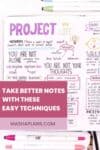



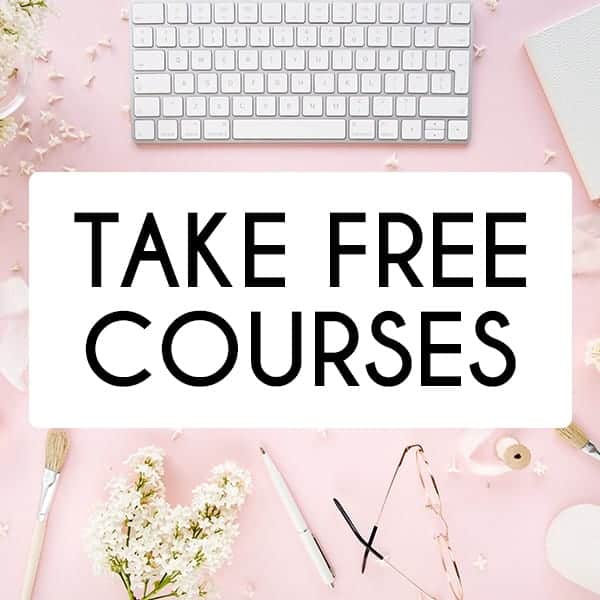
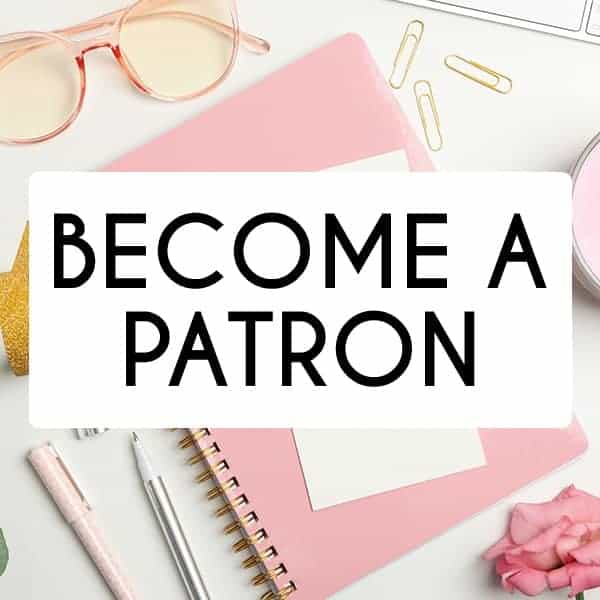
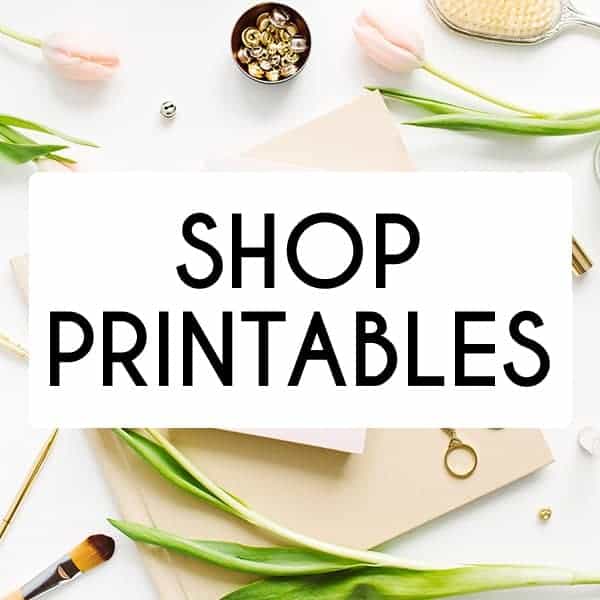
I have been using this all year without know what it was called also thanks for the extra tips it’s gonna help with high school
Isn’t it such a woncerful way to study! Happy you found some useful tips in this post.
Great post Masha! I’m planning on using sketch notes this semester to perhaps help me with my scriptwriting, and remembering information from the plays I have to read and analysis.
So glad it was useful! And yeah this is a great way to remember information
I’ve been trying to get better at sketch notes all year but I still feel like it’s really hard. I’m so used to just writing what I’m hearing that it fells so much faster than trying to think about layout, hierarchy and doodles in the moment. I’ll definitely try using pencil next time so I can write more in the moment and save most of the drawing for later.
Yeah, I’m very used to it too. What helped me is taking notes in pencil and then reword it all with structure and doodles. I feel like it’s a matter of practice, I feel I’m getting better.